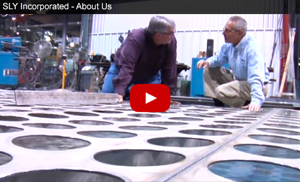 Dust produced from coal combustion isn't just something to sweep away. Materials like fly ash and bottom ash are emerging as valuable resources in industrial applications. Once considered waste, these byproducts are now paving the way for efficiency and sustainability across various industries.
Dust produced from coal combustion isn't just something to sweep away. Materials like fly ash and bottom ash are emerging as valuable resources in industrial applications. Once considered waste, these byproducts are now paving the way for efficiency and sustainability across various industries.
Understanding Fly Ash and Bottom Ash
Fly ash is the fine, powdery material from burning pulverized coal in power plants at high temperatures. This ash contains silicon dioxide and aluminum oxide, captured by emission control devices before flue gases reach the atmosphere. Bottom ash, conversely, is the coarser, granular, and heavier residue that settles at the bottom of the combustion chamber, where the intense heat causes some particles to melt and fuse. Due to the high combustion temperatures, bottom ash often has a gravel-like consistency.
Both types of ash present environmental challenges when disposed of improperly. Landfilling these materials can lead to soil and water contamination. However, by reimagining their potential uses, industries are turning these dust particles into practical solutions.
The Role of Fly Ash in Industry
Fly ash has found a significant place in the construction sector, primarily due to its pozzolanic properties, which make it an excellent substitute or additive for cement in concrete production. When used in concrete, it increases durability, strength, and workability. The spherical shape of fly ash particles improves fluidity, reducing the need for excess water. This makes the concrete easier to work with and contributes to a more robust final product.
In addition to concrete, fly ash is used in manufacturing bricks, partially replacing traditional clay. This conserves natural resources and results in bricks with superior strength and reduced permeability.
Beyond construction, fly ash plays a role in various innovative applications:
- Agriculture: As a soil amendment, it improves soil texture and fertility. Its capacity to retain water benefits crops, especially in arid regions.
- Wastewater Treatment: Its porous structure aids in removing contaminants from water supplies.
- High-Tech Manufacturing: Extraction of rare earth elements from fly ash supports the production of smartphones, electric vehicles, and renewable energy systems.
These diverse uses demonstrate fly ash's versatility and value across multiple industries.
Selecting the correct filter media for industries dealing with fly ash impacts dust collection efficiency and safety. For detailed guidance, learn how to select the correct filter media.
The Potential of Bottom Ash
Bottom ash holds significant untapped potential as a sustainable resource across various industries. Bottom ash resembles the fine aggregates used in construction with its coarse and porous nature. Its angular particles make it suitable for creating lightweight concrete masonry units (CMUs). These blocks are lighter and offer excellent thermal insulation and fire resistance.
Bottom ash replaces traditional materials in producing lightweight aggregates, reducing the overall weight of construction elements. This leads to easier handling and potential cost savings. Using bottom ash also increases thermal insulation and fire resistance. Utilizing bottom ash in these applications conserves natural resources and reduces landfill dependency, mitigating environmental impact by transforming what was once discarded into a functional, environmentally friendly material.
Future Trends and Innovations
The potential applications of fly ash and bottom ash continue to expand. Research is underway to develop new materials and technologies that leverage their unique properties.
Fly ash's porous structure shows promise in removing contaminants in wastewater treatment. In agriculture, ongoing studies explore its effectiveness in improving soil health.
As industries seek sustainable solutions, the role of these byproducts becomes increasingly important. Innovations in processing and application methods will likely unlock further uses, contributing to a cleaner, sustainable industrial landscape.
Transforming Waste into Solutions
Repurposing fly ash and bottom ash addresses environmental concerns associated with their disposal. By integrating these materials into industrial processes, companies reduce landfill waste and conserve natural resources. In addition, using fly ash in Portland cement instead of disposing of it in landfills or impoundments near coal power plants not only alleviates waste management challenges at these sites but also reduces CO₂ emissions and enhances concrete performance.
The production of Portland cement involves heating limestone and other materials to high temperatures, which releases a significant amount of CO₂ due to the calcination process and energy consumption. Every ton of fly ash that replaces Portland cement reduces the CO₂ emissions associated with cement production. This contributes to a lower carbon footprint for concrete production. By incorporating fly ash into cement, the industry can create a more sustainable building material that benefits both the environment and concrete quality.
Effective Dust Collection Equipment
With over a century of experience, companies like SLY Inc. provide custom dust collection solutions that meet specific industrial needs. Our advanced dust collection equipment is suited for handling fly ash and bottom ash. Contact our dust collection solutions experts to discuss your specific needs and request a quote.
Tags: Fly Ash





